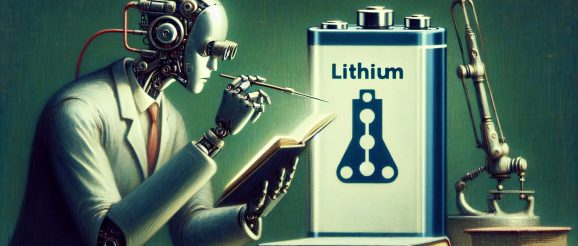AI-driven Battery Innovation Reduces Lithium Use

Scientists have partnered with Microsoft to employ artificial intelligence (AI) to develop a novel material for constructing batteries that require up to 70% less lithium compared to existing models. The focus lies on the electrolyte aspect of lithium-ion batteries, which are essential for powering day-to-day devices, electric vehicles, and greener electric grids. Using AI-driven techniques, the researchers developed an innovative electrolyte composition that allows for enhanced energy storage while significantly reducing lithium dependency. This breakthrough has the potential to revolutionize the current energy storage landscape and address challenges faced by consumer electronics and the automotive industry. The search for alternative materials The experiment began with 23.6 million possible materials. The researchers altered existing electrolytes and replaced lithium atoms with various elements. This extensive experimentation led to the discovery of promising candidates that exhibited improved stability and performance in batteries. As research continues to refine these alternative materials, the battery technology industry expects a significant leap in energy storage capabilities, offering new possibilities across different applications. Utilizing AI for material discovery An AI algorithm was employed to eliminate unstable materials or those displaying weak chemical reactions, reducing the list to several hundred possibilities. Some of these materials had never been explored before and have the potential to open up groundbreaking research and innovation opportunities. It also provides a starting point for scientists to further refine their properties. By synthesizing these novel materials, researchers hope to create advanced technological applications and revolutionize various industries, such as renewable energy and pharmaceuticals. Successful construction of a functional battery The team selected a material that replaced half of the expected lithium atoms with sodium, resulting in the successful creation of a functional battery. This innovative combination of lithium and sodium improved energy-storage capabilities, maintaining cost-effectiveness. The new hybrid battery holds the potential to revolutionize portable power solutions for various electronic devices and transportation methods, including electric vehicle technology. Room for optimization and performance enhancement Although the battery has lower conductivity, there is still room for optimization. Researchers continue exploring methods to enhance its performance and achieve higher energy efficiency. This includes investigating new materials, refining manufacturing processes, and employing innovative designs that can boost the battery’s conductivity for practical applications. Promising potential for sustainable battery technology The development of the new battery, from collaborating with Microsoft to illuminating a light bulb, spanned roughly nine months. During this time, researchers and engineers worked together to optimize the battery’s efficiency and output. The successful illumination of the light bulb marks a significant milestone in the project, showcasing the promising potential of this innovative energy storage solution. Reducing lithium dependency for a sustainable future Reducing lithium dependency in battery design could aid in decreasing costs and reliance on the limited resource. By using alternative materials and innovative technology, this new design offers a potential solution to the growing demand for energy storage. Furthermore, reducing the lithium dependency might lead to a more sustainable and eco-friendly battery production process in the long run. First Reported on: newscientist.com Frequently Asked Questions What is the main goal of the AI-driven battery innovation project? The primary aim of the project is to develop a novel material for constructing batteries that require up to 70% less lithium compared to existing models. This objective has been achieved by focusing on the electrolyte aspect of lithium-ion batteries and using AI-driven techniques to optimize energy storage and reduce lithium dependency. How did researchers utilize AI for material discovery? Researchers employed AI algorithms to eliminate unstable materials or those displaying weak chemical reactions from an initial list of 23.6 million possible materials. The list was narrowed down to several hundred possibilities, some of which had never been explored before, opening up opportunities for groundbreaking research and innovation. What was the outcome of the successful construction of the functional battery? The team developed a functional battery where half of the expected lithium atoms were replaced with sodium. This innovative combination of lithium and sodium resulted in improved energy-storage capabilities while maintaining cost-effectiveness. The hybrid battery holds the potential to revolutionize portable power solutions for various electronic devices and transportation methods, including electric vehicle technology. How can battery performance and optimization be enhanced? Researchers are currently exploring methods to enhance battery performance and achieve higher energy efficiency. This includes investigating new materials, refining manufacturing processes, and employing innovative designs that can boost the battery’s conductivity for practical applications. What is the significance of reducing lithium dependency? By reducing lithium dependency in battery design, it can become more cost-effective while decreasing reliance on limited resources. The new design also offers a solution to the growing demand for energy storage and leads to a more sustainable and eco-friendly battery production process in the long run.
